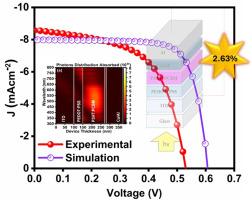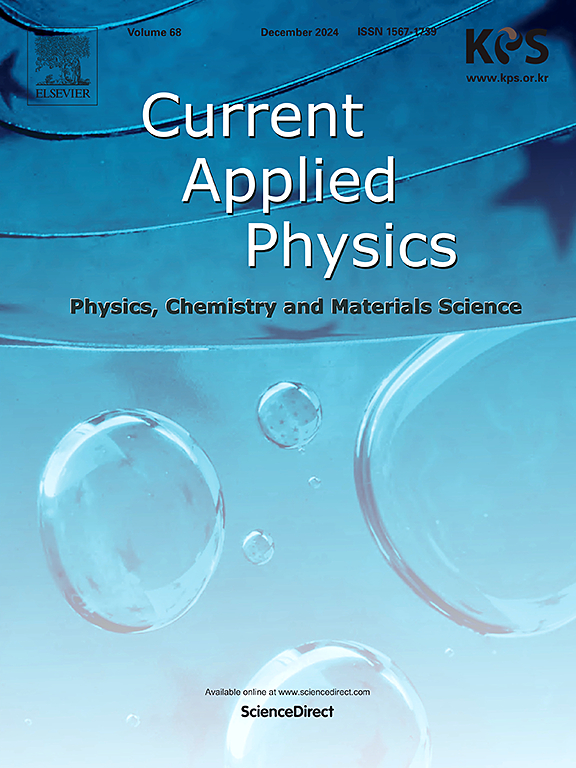优化聚合物太阳能电池操作参数的实验和计算见解
IF 3.1
4区 物理与天体物理
Q3 MATERIALS SCIENCE, MULTIDISCIPLINARY
引用次数: 0
摘要
本研究探讨了活性层(AL)厚度、退火温度(ATs)和界面材料对基于P3HT: PCBM聚合物太阳能电池(PSCs)性能的影响。通过改变旋转速度(1000-5000 rpm)来调节AL的厚度,器件D1K和D4K在130℃热退火后的pce分别为2.37%和2.17%。将温度提高到180℃,进一步提高了器件效率。研究了界面层LiF和Ca对PSC性能和热稳定性的影响。Ca/ al基器件在较低温度下性能优于其他器件,但在较高温度下性能下降,而liff / al基器件在超过~ 110°C时PCE降低。为了补充实验,使用漂移扩散、激子扩散和转移矩阵模型(TMM)进行了模拟。这些提供了对光子分布、吸收和载流子产生的见解,支持了实验结果。该研究为优化PSC性能提供了器件结构和热处理之间的相互作用的全面理解。本文章由计算机程序翻译,如有差异,请以英文原文为准。

Experimental and computational insights into optimizing polymer solar cell operational parameters
This study explores the impact of active layer (AL) thickness, annealing temperatures(ATs), and interfacial materials on the performance of polymer solar cells (PSCs) based on P3HT: PCBM. AL thickness was tuned by varying spin speeds (1000–5000 rpm), with devices D1K and D4K achieving PCEs of 2.37 % and 2.17 % after thermal annealing at 130 °C. Increasing the AT to 180 °C further enhanced device efficiency. The influence of interfacial layers LiF and Ca on PSC performance and thermal stability was also investigated. Ca/Al-based devices outperformed others at lower temperatures but degraded at higher temperatures, while LiF/Al-based devices showed reduced PCE beyond ∼110 °C. To complement experiments, simulations using drift-diffusion, exciton-diffusion, and transfer-matrix models(TMM) were performed. These provided insights into photon distribution, absorption, and carrier generation, supporting the experimental outcomes. The study offers a comprehensive understanding of the interplay between device architecture and thermal treatment in optimizing PSC performance.
求助全文
通过发布文献求助,成功后即可免费获取论文全文。
去求助
来源期刊

Current Applied Physics
物理-材料科学:综合
CiteScore
4.80
自引率
0.00%
发文量
213
审稿时长
33 days
期刊介绍:
Current Applied Physics (Curr. Appl. Phys.) is a monthly published international journal covering all the fields of applied science investigating the physics of the advanced materials for future applications.
Other areas covered: Experimental and theoretical aspects of advanced materials and devices dealing with synthesis or structural chemistry, physical and electronic properties, photonics, engineering applications, and uniquely pertinent measurement or analytical techniques.
Current Applied Physics, published since 2001, covers physics, chemistry and materials science, including bio-materials, with their engineering aspects. It is a truly interdisciplinary journal opening a forum for scientists of all related fields, a unique point of the journal discriminating it from other worldwide and/or Pacific Rim applied physics journals.
Regular research papers, letters and review articles with contents meeting the scope of the journal will be considered for publication after peer review.
The Journal is owned by the Korean Physical Society.
 求助内容:
求助内容: 应助结果提醒方式:
应助结果提醒方式:


